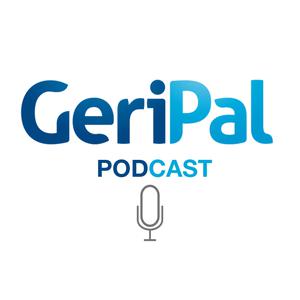
GeriPal
Alex Smith, Eric Widera
A Geriatrics and Palliative Care Podcast
- 49 minutes 44 secondsPalliative Care for Mental Illness: A Podcast with Dani Chammas and Brent Kious
We’ve talked a lot before about integrating psychiatry into palliative care (see here and here for two examples). Still, we haven’t talked about integrating palliative care into psychiatry or in the care of those with severe mental illness.
On this week’s podcast, we talk with two experts about palliative psychiatry. We invited Dani Chammas, a palliative care physician and psychiatrist at UCSF (and a frequent guest to the GeriPal podcast), as well as Brent Kious, a psychiatrist at the Huntsman Mental Health Institute, focusing on the management of severe persistent mental illnesses.
We discuss the following:
-
What is Palliative Psychiatry (and how is it different from Palliative Care Psychiatry)?
-
What does it look like to take a palliative approach to severe mental illness?
-
Is "terminal" mental illness a thing?
-
Is hospice appropriate for people with serious mental illness (and does hospice have the skills to meet their needs?)
-
Controversy over Medical Aid in Dying for primary psychiatric illness (and for those with serious medical illness who have a comorbid psychiatric illness)
-
The level of provider moral distress that can be created in a system not designed to meet the needs of specific populations... and when we are asked to meet a need we don't feel equipped to meet.
Here are a couple of articles if you want to do a deeper dive:
-
Dani and colleagues article on “Psychiatry and Palliative Care: Growing the Interface Through Education.”
-
Dani and colleagues article on “Palliative Care Psychiatry: Building Synergy Across the Spectrum.”
-
Brent’s article on “Physician Aid-in-Dying and Suicide Prevention in Psychiatry: A Moral Crisis?”
-
A NY Times article titled “Should Patients Be Allowed to Die From Anorexia?”
19 December 2024, 7:45 am -
- 47 minutes 52 secondsAI for Surrogate Decision Making?!? Dave Wendler, Jenny Blumenthal-Barby, Teva Brender
Surrogate decision making has some issues. Surrogates often either don’t know what patients would want, or think they know but are wrong, or make choices that align with their own preferences rather than the patients. After making decisions, many surrogates experience regret, PTSD, and depressive symptoms. Can we do better?
Or, to phrase the question for 2024, “Can AI do better?” Follow that path and you arrive at a potentially terrifying scenario: using AI for surrogate decision making. What?!? When Teva Brender and Brian Block first approached me about writing a thought piece about this idea, my initial response was, “Hell no.” You may be thinking the same. But…stay with us here…might AI help to address some of the major issues present in surrogate decision making? Or does it raise more issues than it solves?
Today we talk with Teva, Dave Wendler, and Jenny Blumenthal-Barby about:
-
Current clinical and ethical issues with surrogate decision making
-
The Patient Preferences Predictor (developed by Dave Wendler) or Personalized Patient Preferences Predictor (updated idea by Brian Earp) and commentary by Jenny
-
Using AI to comb through prior recorded clinical conversations with patients to play back pertinent discussions; to predict functional outcomes; and to predict patient preferences based on prior spending patterns, emails, and social media posts (Teva’s thought piece)
-
A whole host of ethical issues raised by these ideas including the black box nature, the motivations of private AI algorithms run by for profit healthcare systems, turning an “is” into an “ought”, defaults and nudges, and privacy.
I’ll end this intro with a quote from Deb Grady in an editor’s commentary to our thought piece in JAMA Internal Medicine about this topic: “Voice technology that creates a searchable database of patients’ every encounter with a health care professional? Using data from wearable devices, internet searches, and purchasing history? Algorithms using millions of direct observations of a person’s behavior to provide an authentic portrait of the way a person lived? Yikes! The authors discuss the practical, ethical, and accuracy issues related to this scenario. We published this Viewpoint because it is very interesting, somewhat scary, and probably inevitable.”
12 December 2024, 7:45 am -
- 48 minutes 34 secondsStories We Tell Each Other to Heal: Ricky Leiter, Alexis Drutchas, & Emily Silverman
We’ve covered stories before. With Liz Salmi, Anne Kelly, and Preeti Malani we talked about stories written up in the academic literature, such as the JAMA Piece of My Mind series. We talked with Thor Ringler, who helped found the My Life My Story Project at the VA and beyond, and Heather Coats about the evidence base for capturing patient stories.
Today’s podcast is both similar and different. Similar in that the underlying theme of the power of stories. Different in that these storytelling initiatives, the Nocturnists and the Palliative Story Exchange, are focused on clinicians sharing stories with each other in small groups to heal. There’s something magical that happens in small group storytelling. It’s that mixture of intimacy and vulnerability, of shared clinical experiences, that fosters a sense of belonging. We model that small group storytelling experience today.
We discuss:
-
The “origin stories” of the Nocturnists Live Show and Podcast and the Palliative Story Exchange
-
The process for story creation and development, written in advance or not, feedback or not after the story, and the aims and goals of each initiative
-
And we each tell a short story, modeling the process for The Nocturnists and the Palliative Story Exchange for our listeners
These initiatives arose organically from clinicians as part of a journey away from burnout, moral distress, shame, and loneliness toward healing, wholeness, gratitude, and belonging. A journey taken one story at a time.
One final note on the song request: About 20 years ago I took an epidemiology course as part of a Masters program. The instructor, Fran Cook, gave all the students a survey without explanation. We answered the survey and handed it in. One of the questions was, “Can you name a song by the Tragically Hip?” It later turned out the survey was a prognostic index designed to determine if the respondent was Canadian.
Here’s a link to an article about the Palliative Story Exchange.
5 December 2024, 7:45 am -
- 50 minutes 24 secondsCoping with Serious Illness: Danielle Chammas and Amanda Moment
Denial. Substance use. Venting. Positive reframing. Humor. Acceptance. All of these are ways we cope with stressful situations. Some we may consider healthy or unhealthy coping strategies, but are they really that easy to categorize? Isn’t it more important to ask whether a particular coping behavior is adaptive or not for a particular person,in a particular time or situation?
We are going to tackle this question and so many more about coping on this week's podcast with Dani Chammas, a recurring GeriPal guest, psychiatrist, and palliative care doc at UCSF, and Amanda Moment, a Palliative Care Social Worker at Brigham and Women's Cancer Center. There are so many take-home points for me on this podcast, including this one on a framework for assessing coping in serious illness:
-
nonjudgmentally observe their coping
-
wonder about the impacts of their coping
-
prioritize helping patients maintain their psychological integrity
-
mindfully think through how we can serve their coping in ways that they can tolerate, always calibrating based on the person, the moment, and the setting in front of us.
Here are some more resources we’ve discussed in the podcast
-
Dani’s NEJM article on coping: “Should I Laugh at That? Coping in the Setting of Serious Illness”
-
Dani’s GeriPal podcast with us on “Improving Serious Illness Communication By Developing Formulations”
-
A great journal article on “Formulation in Palliative Care: Elevating Our Potential for Therapeutic Communication”
-
A study on how palliative care may work by enhancing patients’ ability to access adaptive coping - “Role of Patient Coping Strategies in Understanding the Effects of Early Palliative Care on Quality of Life and Mood
** NOTE: To claim CME credit for this episode, click here **
21 November 2024, 7:45 am -
- 46 minutes 46 secondsFalls and Fractures: A Podcast with Sarah Berry
Falls are very common among older adults but often go unreported or untreated by healthcare providers. There may be lots of reasons behind this. Patients may feel like falls are just part of normal aging. Providers may feel a sense of nihilism, that there just isn't anything they can do to decrease the risk of falling. On this week's podcast, we try to blow up this nihilism with our guest Sarah Berry.
Sarah is a geriatrician at Hebrew SeniorLife in Boston where she does research on falls, fractures, and osteoporosis in older adults. We pepper Sarah with questions ranging from:
-
Why should we care about falls?
-
What are ways we should screen for falls?
-
What are evidence based interventions to decrease the risk of falls?
-
What about Vitamin D and falls???
-
How should we assess for fracture risk?
-
What are some evidence-based ways to decrease fracture risk?
-
When should we prescribe vs deprescribe bisphosphonate therapy? How does life expectancy fit in with all of this?
If you want to do a deeper dive into some of the articles we discuss, take a look at the following:
-
An awesome JAMA review by Sarah on fall risk assessment and prevention in community-dwelling adults.
-
The Fracture Risk Assessment in Long term care (FRAiL) website
-
James Deardorff’s JAMA IM article on “Time to Benefit of Bisphosphonate Therapy for the Prevention of Fractures Among Postmenopausal Women With Osteoporosis
-
Sarah’s article on “Controversies in Osteoporosis Treatment of Nursing Home Residents”, which includes this helpful flow chart on starting/stopping osteoporosis drugs in nursing homes
14 November 2024, 7:45 am -
- 47 minutes 7 secondsDialysis vs Conservative Management for Older Adults: Manju Kurella Tamura, Susan Wong, & Maria Montez-Rath
We recently published a podcast on palliative care for kidney failure, focusing on conservative kidney management. Today we’re going to focus upstream on the decision to initiate dialysis vs conservative kidney management.
As background, we discuss Manju Kurella Tamura’s landmark NEJM paper that found, contrary to expectations, that function declines precipitously for nursing home residents who initiate dialysis. If the purpose of initiating dialysis is improving function - our complex, frail, older patients are likely to be disappointed.
We also briefly mention Susan Wong’s terrific studies that found a disconnect between older adults with renal failure’s expressed values, focused on comfort, and their advance care planning and end-of-life care received, which focused on life extension; and another study that found quality of life was sustained until late in the illness course.
One final briefly mentioned piece of background: John Oliver’s hilarious and disturbing takedown of the for profit dialysis industry, focused on DaVita.
And the main topic of today is a paper in Annals of Internal Medicine, Maria first author, that addressed the tradeoffs between initiating dialysis vs continued medical/supportive management. Turns out, in summary people who initiate dialysis have mildly longer lives, but spend more time in facilities, away from home. We also discuss (without trying to get too wonky!) immortal time bias and target emulation trials. Do target trials differ from randomized trials and “ordinary” observational studies, or do they differ?!? Eric is skeptical.
Bottom line: if faced with the decision to initiate dialysis, waiting is generally better. Let it be (hint hint).
-Additional link to study with heatmaps of specific locations (hospital, nursing home, home) after initiating dialysis.
-@AlexSmithMD
7 November 2024, 7:45 am - 43 minutes 56 secondsCOVID Updates: A Podcast with Peter Chin-Hong and Lona Mody
In March 2020, we launched our first podcast on COVID-19. Over the past four years, we’ve seen many changes—some positive, some negative. While many of us are eager to move past COVID (myself included), it’s clear that COVID is here to stay.
This week, we sit down with infectious disease experts Peter Chin-Hong and Lona Mody to discuss living with COVID-19. Our conversation covers:
-
The current state of COVID
-
Evidence for COVID boosters, who should get them, and preferences between Novavax and mRNA vaccines
-
COVID treatments like Molnupiravir and Paxlovid
-
Differences in COVID impact on nursing home residents and those with serious illnesses
We wrap up with a “magic wand” question. My wish was for better randomized evidence for vaccines and treatments, though I worry this might not be feasible. In the meantime, there’s significant room to improve vaccine uptake among high-risk groups, particularly nursing home residents. Currently, only 1 in 5 nursing home residents in the US have received the COVID booster, compared to over 50% in the UK.
By: Eric Widera
31 October 2024, 6:45 am -
- 52 minutes 7 secondsMedical Cannabis Revisited: A Podcast with David Casarett and Eloise Theisen
Cannabis is complicated. It can mean many things, including a specific type of plant, the chemicals in the plant, synthetic analogs, or products that have these components. The doses of the most widely discussed pharmacologically active ingredients, THC and CBD, vary by product, and the onset and bioavailability vary by how it is delivered. If you believe the evidence for efficacy to manage symptoms like neuropathic pain, how do you even start to think about recommending these products to patients?
On today’s podcast, we answer that question with our guests, David Casarett and Eloise Theisen. David is a physician who wrote the book “Stoned: A Doctor's Case for Medical Marijuana” and gave a TED talk on “A Doctor's Case for Medical Marijuana” that was watched over 3 million times. Eloise is a palliative care NP at Stanford and co-founder of The Radicle Health Clinician Network.
So, take a listen and check out the following resources to learn more about medical cannabis:
-
Radicle Health’s curriculum and modules for healthcare professionals on cannabis
-
NEJM Catalyst article on integrating medical cannabis into clinical care
-
David’s TED talk on “A Doctor's Case for Medical Marijuana”
-
A JPSM systematic review of current evidence for cannabis in palliative care
-
Our past GeriPal episode with Bree Johnston and Ben Han on cannabis in older adults
24 October 2024, 6:45 am -
- 48 minutes 28 secondsGuidelines or Goals in Heart Failure: Parag Goyal, Nicole Superville, and Matthew Shuster
When treating heart failure, how do we distinguish between the expanding list of medications recommended for “Guideline Directed Medical Therapy” (GDMT) and what might be considered runaway polypharmacy? In this week’s podcast, we’ll tackle this crucial question, thanks to a fantastic suggestion from GeriPal listener Matthew Shuster, who will join us as a guest host.
We’ve also invited two amazing cardiologists, Parag Goyal and Nicole Superville, to join us about GDMT in heart failure with reduced ejection fraction (HFrEF) and in Heart Failure with preserved EF (HFpEF). We talk about what is heart failure, particularly HFpEF, how we treat it (including the use of sodium–glucose cotransporter-2 inhibitors (SGLT2’s), and how we should apply guidelines to individual patients, especially those with multimorbidity who are taking a lot of other medications.
I’d also like to give a shout out to a recent ACP article on HFpEF with an outstanding contribution from Ariela Orkaby, geriatrician extraordinaire (we also just did a podcast with her on frailty).
17 October 2024, 6:45 am - 47 minutes 56 secondsIntentionally Interprofessional Care: DorAnne Donesky, Michelle Milic, Naomi Saks, & Cara Wallace
In fellowship, one of the leaders at MGH used to quote Balfour Mount as saying, “You say you’ve worked on teams? Show me your scars.” Scars, really? Yes. I’ve been there. You probably have too. On the one hand, I don’t think interprofessional teamwork needs to be scarring. On the other hand, though it goes against my middle-child “can’t we all get along” nature, disagreement is a key aspect of high functioning teams. The key is to foster an environment of curiosity and humility that welcomes and even encourages a diversity of perspectives, including direct disagreement.
Today we talk with DorAnne Donesky, Michelle Milic, Naomi Saks, & Cara Wallace about the notion that we should revolutionize our education programs, training programs, teams, incentive structures, and practice to be intentionally interprofessional in all phases. The many arguments, theories, & approaches across settings and conditions are explored in detail in the book they edited, “Intentionally Interprofessional Palliative Care” (discount code AMPROMD9). Of note: these lessons apply to geriatrics, primary care, hospital medicine, critical care, cancer care, etc, etc.
And they begin on today’s podcast with one clinical ask: everyone should be a generalist and a specialist. In other words, in addition to being a specialist (e.g. social worker, chaplain), everyone should be able to ask a question or two about spiritual concerns, social concerns, or physical concerns.
Many more approaches to being interprofessional on today’s podcast. But how about you! What will you commit to in order to be more intentionally interprofessional?
If we build this dream together, standing strong forever, nothing’s gonna stop us now…
-@AlexSmithMD
Interprofessional organizations that are not specific to palliative care are doing excellent work
-
National Center for Interprofessional Practice and Education: https://nexusipe.org/
-
National Collaborative for Improving the Clinical Learning Environment https://ncicle.org/
-
Interprofessional Education Collaborative (home of the IPEC Competencies) https://www.ipecollaborative.org/
-
American Interprofessional Health Collaborative (sponsor of the biennial meeting "Collaborating Across Borders") https://aihc-us.org/index.php/
-
Health Professions Accreditors Collaborative https://healthprofessionsaccreditors.org/
This episode of the GeriPal Podcast is sponsored by UCSF’s Division of Palliative Medicine, an amazing group doing world-class palliative care. They are looking to build on both their research and clinical programs and are interviewing candidates for the Associate Chief of Research and for full-time physician faculty to join them in the inpatient and outpatient setting. To learn more about job opportunities, please click here: https://palliativemedicine.ucsf.edu/job-openings
** NOTE: To claim CME credit for this episode, click here **
10 October 2024, 6:45 am -
- 49 minutes 50 secondsImages of the Dying: A Podcast with Wendy MacNaughton, Lingsheng Li, and Frank Ostaseski
Can death be portrayed as beautiful?
In this episode, we share the joy of talking with Wendy MacNaughton (artist, author, graphic journalist) and Frank Ostaseski (Buddhist teacher, author, founder of the Metta Institute and Zen Hospice Project) about using drawings and images as tools for creating human connections and processing death and dying.
You may know Wendy as the talented artist behind Meanwhile in San Francisco or Salt Fat Acid Heat. Our focus today, however, was on her most recently published book titled How to Say Goodbye. This beautiful book began as a very personal project for Wendy while she was the artist-in-residence at Zen Hospice. As BJ MIller writes in the foreword, “May this book be a portal -- a way for us to move beyond the unwise territory of trying to ‘do it right’ and into the transcendent terrain of noticing what we can notice, loving who we love, and letting death -- like life --surprise us with its ineffable beauty.”
Some highlights from our conversation:
-
The role of art in humanizing the dying process.
-
How the act of drawing can help us sloooow down, pay attention to the people and world around us, and ultimately let go…
-
The possibility of incorporating drawings in research and even clinical care.
-
The wisdom and experiences of hospice caregivers (who are often underpaid and undervalued).
-
How to use the “Five Things” as a framework for a “conversation of love, respect, and closure” with someone who is dying.
And finally, Wendy offers a drawing lesson and ONE-MINUTE drawing assignment to help us (and our listeners) be more present and connect with one another. You can read more about this blind contour exercise from Wendy’s DrawTogether Strangers project. The rules are really quite simple:
-
Find another person.
-
Sit down and draw each other for only one minute.
-
NEVER lift up your pen/pencil (draw with a continuous line)
-
NEVER look down at your paper
-
That’s it! While the creative process is what truly matters, we think that the outcome is guaranteed to be awesome and definitely worth sharing. We invite you to post your drawings on twitter and tag us @GeriPalBlog!
Happy listening and drawing,
Lingsheng @lingshengli
Additional info:
-
For weekly lessons on drawing and the art of paying attention from Wendy, you can subscribe to her Substack DrawTogether with WendyMac and join the Grown-Ups Table (GUT)!
-
To learn more about Frank’s teaching and philosophy on end-of-life care, read his book The Five Invitations
This episode of the GeriPal Podcast is sponsored by UCSF’s Division of Palliative Medicine, an amazing group doing world-class palliative care. They are looking to build on both their research and clinical programs and are interviewing candidates for the Associate Chief of Research and for full-time physician faculty to join them in the inpatient and outpatient setting. To learn more about job opportunities, please click here: https://palliativemedicine.ucsf.edu/job-openings
** This podcast is not CME eligible. To learn more about CME for other GeriPal episodes, click here.
3 October 2024, 6:45 am -
- More Episodes? Get the App
Your feedback is valuable to us. Should you encounter any bugs, glitches, lack of functionality or other problems, please email us on [email protected] or join Moon.FM Telegram Group where you can talk directly to the dev team who are happy to answer any queries.
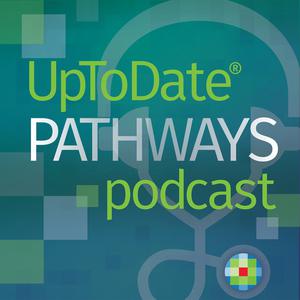 UpToDate Pathways Podcast
UpToDate Pathways Podcast
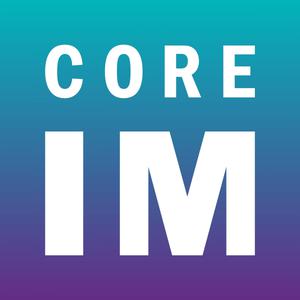 Core IM | Internal Medicine Podcast
Core IM | Internal Medicine Podcast
 Annals On Call Podcast
Annals On Call Podcast
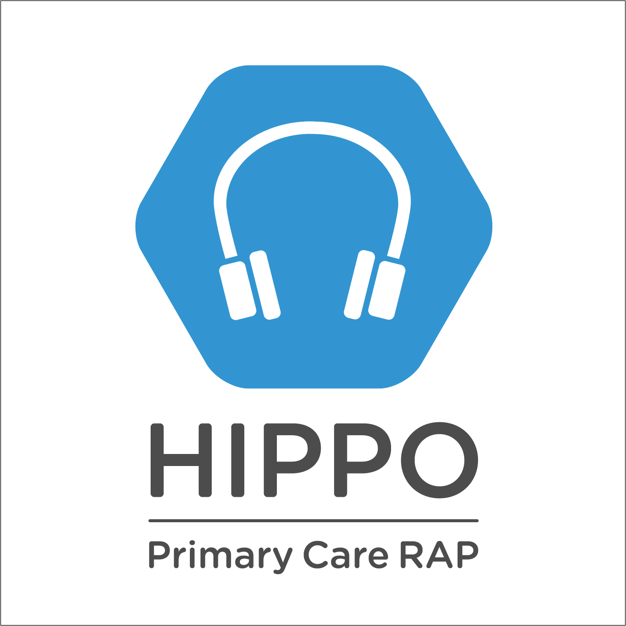 Primary Care RAP
Primary Care RAP
 The Clinical Problem Solvers
The Clinical Problem Solvers
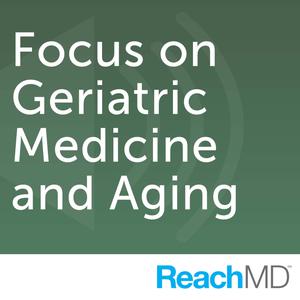 Focus on Geriatric Medicine and Aging
Focus on Geriatric Medicine and Aging